what is VITAMIN D?
One of the most important vitamins for the body – vitamin D – is also known as the “sun vitamin”. Despite its name, nowadays it has been recognised as a hormone synthesised by the human body when the skin comes into contact with the ultraviolet radiation of the sun. Although the most productive and natural way of topping up vitamin D stores in the body is sunbathing (as long as the skin is not covered with sunscreen), a small portion of the vitamin D we need is also ingested with food (fatty fish, egg yolks, etc.).

what is VITAMIN D?
One of the most important vitamins for the body – vitamin D – is also known as the “sun vitamin”. Despite its name, nowadays it has been recognised as a hormone synthesised by the human body when the skin comes into contact with the ultraviolet radiation of the sun. Although the most productive and natural way of topping up vitamin D stores in the body is sunbathing (as long as the skin is not covered with sunscreen), a small portion of the vitamin D we need is also ingested with food (fatty fish, egg yolks, etc.).

Unfortunately, the two conventional ways of obtaining vitamin D are no longer sufficient enough for our bodies today. Vitamin D deficiency is widespread throughout the world. It has been diagnosed for nearly 50% of the population of our planet. In Latvia, the statistics are even more dramatic with studies showing that more than 80% of Latvia’s inhabitants are deficient in vitamin D. Research also shows that insufficient levels and deficiency of vitamin D affect people on Latvia regardless of their age, gender or even the season – during the winter when we lack sufficient amounts of sunshine, our vitamin D levels become catastrophically low (15.1 ng/ml). In turn, in summer when we get more sun and ought to be producing plenty of vitamin D in our skin, its levels for most people in Latvia remain below the recommended threshold.
Until recently, the main consequences of inadequate vitamin D levels were thought to be rickets and osteoporosis. However, due to the fact that vitamin D receptors are found in nearly every cell in our body, studies have now proven the strong effect of this vitamin on various processes in the human body. Vitamin D deficiency has been linked with the development of a broad range of pathological processes – chronic pain, cardiovascular disease, multiple sclerosis, malignant tumors etc.
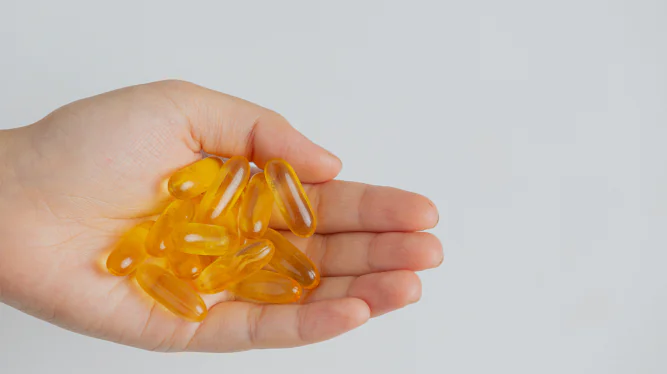

Until recently, the main consequences of inadequate vitamin D levels were thought to be rickets and osteoporosis. However, due to the fact that vitamin D receptors are found in nearly every cell in our body, studies have now proven the strong effect of this vitamin on various processes in the human body. Vitamin D deficiency has been linked with the development of a broad range of pathological processes – chronic pain, cardiovascular disease, multiple sclerosis, malignant tumors etc.

Most vitamin D supplements available at pharmacies are D2 (ergocalciferol) and D3 (cholecalciferol). Vitamin D2 is obtained from yeast or plants. Most doctors do not recommend D2, as the human body is not accustomed to it. Vitamin D3 has been recognised as being identical to the vitamin D found naturally in our bodies. This is the form of the vitamin that our bodies synthesise under the influence of the sun.
The vitamin D3 included in dietary supplements can be obtained in two ways – from fish or from lanolin. Lanolin is a waxy substance secreted by glands in the skin of sheep. The main function of lanolin is to protect the skin from various external environmental factors. Lanolin is obtained from sheep fleece by pressing it until the yellowish, waxy substance oozes out. After lengthy processing the obtained wax yields vitamin D3. It must be noted that sheep are not harmed in the process of obtaining lanolin, because only the sheered wool is used.


The vitamin D3 included in dietary supplements can be obtained in two ways – from fish or from lanolin. Lanolin is a waxy substance secreted by glands in the skin of sheep. The main function of lanolin is to protect the skin from various external environmental factors. Lanolin is obtained from sheep fleece by pressing it until the yellowish, waxy substance oozes out. After lengthy processing the obtained wax yields vitamin D3. It must be noted that sheep are not harmed in the process of obtaining lanolin, because only the sheered wool is used.

Due to the dramatic situation, health care specialists in Germany and the Netherlands have recently issued recommendations for children and adults to ingest 800 IU (international units) of vitamin D per day. Australian health organisations have prescribed a daily norm of 600 IU for people who get some sun exposure (up to the age of 70) and 800 IU for people over 70. However, for people who are not regularly exposed to ultraviolet radiation, the daily dose is set at 1000 – 2000 IU. People, whose vitamin D3 levels are approaching the deficit threshold, are recommended to take 3000 – 5000 IU daily for a period of 6 – 12 weeks, later continuing supplementing 1000 – 2000 IU daily.
The official recommended daily dose of vitamin D3 in Latvia is 10 µg or 400 IU. However, doctors in Latvia have the following opinions regarding the necessary daily dose of vitamin D3: The average adult needs a daily dose of 5000 – 10 000 IU in order to reach optimal vitamin D levels. Medicinal doses of vitamin D are, on average, 70 – 80 IU per kilogram, i.e. a patient weighing 70 kg would need an average of 5000 IU per day. The dosage may be higher if vitamin D levels are severely depleted (e.g. less than 20 ng/ml). Having attained optimal vitamin D levels (tests should be repeated at no less than 3-month intervals), it is recommended to continue taking vitamin D in prophylactic doses – an average of 800 – 2000 IU per day for adults. Failing to do so could lead to losing the hard-earned optimal vitamin D levels and the beneficial effects thereof over the next few months.


The official recommended daily dose of vitamin D3 in Latvia is 10 µg or 400 IU. However, doctors in Latvia have the following opinions regarding the necessary daily dose of vitamin D3: The average adult needs a daily dose of 5000 – 10 000 IU in order to reach optimal vitamin D levels. Medicinal doses of vitamin D are, on average, 70 – 80 IU per kilogram, i.e. a patient weighing 70 kg would need an average of 5000 IU per day. The dosage may be higher if vitamin D levels are severely depleted (e.g. less than 20 ng/ml). Having attained optimal vitamin D levels (tests should be repeated at no less than 3-month intervals), it is recommended to continue taking vitamin D in prophylactic doses – an average of 800 – 2000 IU per day for adults. Failing to do so could lead to losing the hard-earned optimal vitamin D levels and the beneficial effects thereof over the next few months.
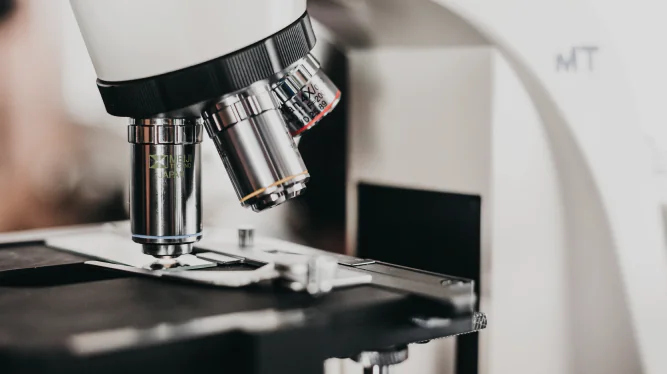
In order to identify vitamin D levels, laboratory blood tests measure the level of the 25(OH) form of vitamin D. This indicator shows the total amount of vitamin D in the body. In 25(OH)vitamin D lab tests, a sufficient level is above 30 nanograms per milliliter (ng/ml). Vitamin D levels below 19 ng/ml constitute a vitamin D deficiency.
| Total amount of 25(OH)D or vitamin D in the blood | Expected beneficial effects |
| At least 10 ng/ml | Such minute levels of vitamin D can just barely ensure bone mineralization and protect children from rickets and adults – from osteomalacia (softening of the bones). |
| At least 20 ng/ml | This level of vitamin D has beneficial effects on balance, improved muscular strength, thus reducing the risk of falling. This level is definitely recommended as the threshold for older patients. |
| At least 30 ng/ml | Attaining and maintaining this level of vitamin D can protect you from osteoporosis, bone fragility and fractures. It has been scientifically proven that patients with at least this level of vitamin D are less prone to catching cold! |
| At least 40 ng/ml | Vitamin D also has a positive effect on cardiovascular disease, with risk of mortality even slightly decreasing for patients with vitamin D levels of at least 40 ng/ml! Furthermore, this level of vitamin D ensures protection against various oncologic diseases. |
| At least 50 ng/ml | It has been proven that autoimmune diseases are less severe and the risk of contracting them is lower if vitamin D levels in the blood are at least 50 ng/ml. |
To reap the maximum benefits from vitamin D, its level in the blood should be 45-50 ng/ml.
At least 10 ng/ml
Such minute levels of vitamin D can just barely ensure bone mineralization and protect children from rickets and adults – from osteomalacia (softening of the bones).
At least 20 ng/ml
At least 30 ng/ml
At least 40 ng/ml
At least 50 ng/ml
To reap the maximum benefits from vitamin D, its level in the blood should be 45-50 ng/ml.
most effective way to absorb vitamin d
One of the main reasons for vitamin D deficiency is the passive or low absorption of it in the body, therefore new and alternative ways to ingest vitamin D are being sought throughout the world. When vitamin D is ingested as pills or capsules, it is absorbed in the small intestine. Since vitamin D3 is a fat-soluble vitamin, the intestinal tract is not the best place for it, as the intestines are better equipped to absorb water-soluble substances.
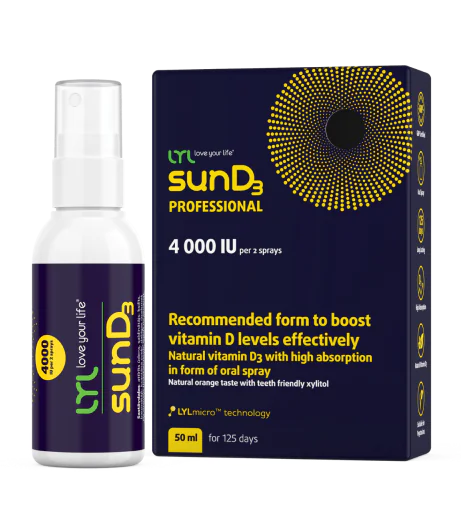
The modern solution offered by LYL SunD3 – ingesting vitamin D by a spray – ensures improved bioefficiency of the product as compared to vitamins in capsule or pill form. Furthermore, it is easy to use, because there is no need to take it with water, synchronize taking it with meals, and it will not be a hassle to use for children or older people who may have problems swallowing capsules or pills.
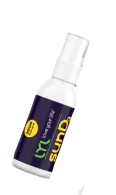
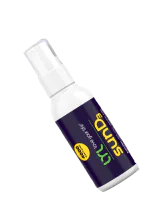
When ingesting this vitamin in the conventional ways (pills, capsules, drops), its absorption depends on various factors, such as the amount of hydrochloric acid in the stomach. The spray form of vitamin D is directly absorbed into the blood stream through the mucus membranes in the mouth. Having been sprayed on the tongue or inside of the cheek, microdroplets of the active substance are transported throughout the body by countless capillaries, blood vessels located close to the top of surface tissues and further on by the whole vascular system to provide all the cells in the body with the vitamin D3 they need.
It has been scientifically proven that absorption of vitamin D3 in the oral cavity is a more effective way to ingest the vitamin. Studies show that by ingesting vitamin D in spray form, its absorption increases by 67% compared to the conventional forms.
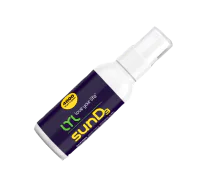

It has been scientifically proven that absorption of vitamin D3 in the oral cavity is a more effective way to ingest the vitamin. Studies show that by ingesting vitamin D in spray form, its absorption increases by 67% compared to the conventional forms.
People suffering from gastrointestinal disorders, liver disorders, coeliac disease, gallbladder and pancreatic disease, people with decreased bio-availability of the vitamin due to obesity or aging, as well as after using various medications, such as glucocorticoids, anti-cramp medications, barbiturates, rifampicin and others, need to pay special attention to the form in which they are ingesting vitamin D.
The sprayable vitamin D is absorbed instantly bypassing the gastrointestinal tract, which, due to the specifics of its functions, can often hinder proper absorption of vitamin D3.
